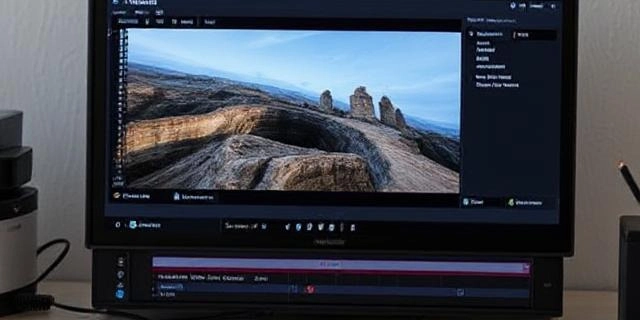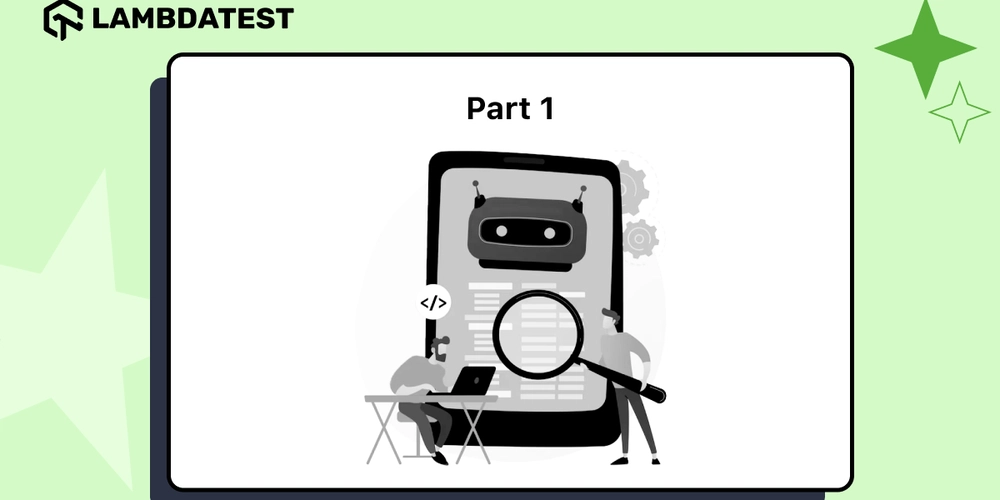An Introduction to HLS Content Delivery: What You Need to Know
Introduction In today’s digital world, streaming high-quality video content has become essential. One of the most widely used streaming technologies is HLS content delivery. Whether you're watching live sports, an online class, or your favorite movie, HLS ensures a smooth, adaptive, and scalable streaming experience. But what exactly is HLS, and why is it so popular? Let's dive in. Understanding HLS (HTTP Live Streaming) HLS (HTTP Live Streaming) is a protocol developed by Apple that delivers video content over the internet. Unlike traditional streaming, which relies on a single continuous file, HLS breaks videos into smaller segments and delivers them dynamically, adjusting to network conditions in real time. Key Components of HLS Content Delivery Media Segments HLS works by dividing a video into short segments, usually a few seconds long. This makes buffering less noticeable and allows for adaptive streaming. M3U8 Playlist Files These files act as indexes, guiding the video player on which media segments to load and in what order. Adaptive Bitrate Streaming One of HLS's most powerful features is its ability to adjust video quality automatically based on the viewer’s internet speed. How HLS Differs from Other Streaming Protocols HLS is often compared to protocols like RTMP, DASH, and MPEG-DASH. While RTMP requires a dedicated server, HLS works over standard HTTP, making it more efficient. Compared to DASH, HLS has broader support, particularly on Apple devices. Benefits of HLS Content Delivery Adaptive Streaming for a Better User Experience HLS ensures smooth playback by adjusting video quality dynamically, reducing buffering and interruptions. Wide Compatibility Across Devices HLS is natively supported on Apple devices, most web browsers, and even Android phones, making it an ideal choice for cross-platform streaming. 2.Scalability for Large Audiences Since HLS uses HTTP-based delivery, it can leverage CDNs (Content Delivery Networks) to handle massive traffic loads efficiently. 3.Security Features of HLS HLS supports AES-128 encryption and token-based authentication, ensuring secure content delivery and protecting against piracy. Real-World Applications of HLS Content Delivery Video-on-Demand (VOD) Streaming Platforms like Netflix, Hulu, and Disney+ rely on HLS for seamless on-demand content delivery, ensuring high-quality playback. Live Streaming Events Sports broadcasts, concerts, and webinars use HLS to deliver real-time content with minimal buffering. E-learning and Webinars Educational platforms use HLS to stream high-quality lessons, ensuring accessibility for students on various devices. How to Implement HLS for Your Content Choose the right encoding tool – Use software like FFmpeg to convert videos into HLS format. Create M3U8 playlist files – These files organize media segments for smooth playback. Optimize segment length – Shorter segments reduce latency, while longer segments improve efficiency. Challenges and Limitations of HLS Latency Issues and How to Reduce Them HLS has higher latency than RTMP, but Low-Latency HLS (LL-HLS) is improving real-time streaming capabilities. Bandwidth Considerations Higher resolution streaming requires more bandwidth. Adaptive bitrate encoding helps manage bandwidth efficiently. Compatibility with Older Browsers Some older browsers may require additional plugins to support HLS streaming. Future of HLS Content Delivery Low-Latency HLS (LL-HLS) Apple’s LL-HLS significantly reduces latency, making live streaming more responsive. AI-Powered Content Delivery Optimization AI and machine learning are being integrated into streaming platforms to optimize bandwidth usage and improve user experience. Conclusion HLS content delivery has revolutionized video streaming, offering adaptive playback, scalability, and security. As technology evolves, improvements like LL-HLS and AI-driven optimization will continue to shape the future of online video distribution. FAQs What makes HLS content delivery better than traditional streaming methods? HLS uses adaptive bitrate streaming, ensuring a buffer-free experience even with fluctuating internet speeds. Can HLS be used for both live and on-demand streaming? Yes! HLS is ideal for both live broadcasts and video-on-demand (VOD) streaming. What are the main challenges of using HLS? Higher latency and bandwidth consumption are common challenges, but LL-HLS is helping reduce latency. How does HLS improve video quality? By dynamically adjusting video resolution based on network conditions, HLS ensures smooth playback. What is the future of HLS in the streaming industry? With advancements in low-latency streaming, AI optimization, and enhanced security, HLS will remain a leading content delivery method for years to come.

Introduction
In today’s digital world, streaming high-quality video content has become essential. One of the most widely used streaming technologies is HLS content delivery. Whether you're watching live sports, an online class, or your favorite movie, HLS ensures a smooth, adaptive, and scalable streaming experience. But what exactly is HLS, and why is it so popular? Let's dive in.
Understanding HLS (HTTP Live Streaming)
HLS (HTTP Live Streaming) is a protocol developed by Apple that delivers video content over the internet. Unlike traditional streaming, which relies on a single continuous file, HLS breaks videos into smaller segments and delivers them dynamically, adjusting to network conditions in real time.
Key Components of HLS Content Delivery
Media Segments
HLS works by dividing a video into short segments, usually a few seconds long. This makes buffering less noticeable and allows for adaptive streaming.
M3U8 Playlist Files
These files act as indexes, guiding the video player on which media segments to load and in what order.
Adaptive Bitrate Streaming
One of HLS's most powerful features is its ability to adjust video quality automatically based on the viewer’s internet speed.
How HLS Differs from Other Streaming Protocols
HLS is often compared to protocols like RTMP, DASH, and MPEG-DASH. While RTMP requires a dedicated server, HLS works over standard HTTP, making it more efficient. Compared to DASH, HLS has broader support, particularly on Apple devices.
Benefits of HLS Content Delivery
Adaptive Streaming for a Better User Experience
HLS ensures smooth playback by adjusting video quality dynamically, reducing buffering and interruptions.
- Wide Compatibility Across Devices HLS is natively supported on Apple devices, most web browsers, and even Android phones, making it an ideal choice for cross-platform streaming.
2.Scalability for Large Audiences
Since HLS uses HTTP-based delivery, it can leverage CDNs (Content Delivery Networks) to handle massive traffic loads efficiently.
3.Security Features of HLS
HLS supports AES-128 encryption and token-based authentication, ensuring secure content delivery and protecting against piracy.
Real-World Applications of HLS Content Delivery
Video-on-Demand (VOD) Streaming
Platforms like Netflix, Hulu, and Disney+ rely on HLS for seamless on-demand content delivery, ensuring high-quality playback.Live Streaming Events
Sports broadcasts, concerts, and webinars use HLS to deliver real-time content with minimal buffering.E-learning and Webinars
Educational platforms use HLS to stream high-quality lessons, ensuring accessibility for students on various devices.
How to Implement HLS for Your Content
Choose the right encoding tool – Use software like FFmpeg to convert videos into HLS format.
Create M3U8 playlist files – These files organize media segments for smooth playback.
Optimize segment length – Shorter segments reduce latency, while longer segments improve efficiency.
Challenges and Limitations of HLS
Latency Issues and How to Reduce Them
HLS has higher latency than RTMP, but Low-Latency HLS (LL-HLS) is improving real-time streaming capabilities.Bandwidth Considerations
Higher resolution streaming requires more bandwidth. Adaptive bitrate encoding helps manage bandwidth efficiently.Compatibility with Older Browsers
Some older browsers may require additional plugins to support HLS streaming.
Future of HLS Content Delivery
Low-Latency HLS (LL-HLS)
Apple’s LL-HLS significantly reduces latency, making live streaming more responsive.AI-Powered Content Delivery Optimization
AI and machine learning are being integrated into streaming platforms to optimize bandwidth usage and improve user experience.
Conclusion
HLS content delivery has revolutionized video streaming, offering adaptive playback, scalability, and security. As technology evolves, improvements like LL-HLS and AI-driven optimization will continue to shape the future of online video distribution.
FAQs
What makes HLS content delivery better than traditional streaming methods?
HLS uses adaptive bitrate streaming, ensuring a buffer-free experience even with fluctuating internet speeds.Can HLS be used for both live and on-demand streaming?
Yes! HLS is ideal for both live broadcasts and video-on-demand (VOD) streaming.What are the main challenges of using HLS?
Higher latency and bandwidth consumption are common challenges, but LL-HLS is helping reduce latency.How does HLS improve video quality?
By dynamically adjusting video resolution based on network conditions, HLS ensures smooth playback.What is the future of HLS in the streaming industry?
With advancements in low-latency streaming, AI optimization, and enhanced security, HLS will remain a leading content delivery method for years to come.








































































































































































![[The AI Show Episode 143]: ChatGPT Revenue Surge, New AGI Timelines, Amazon’s AI Agent, Claude for Education, Model Context Protocol & LLMs Pass the Turing Test](https://www.marketingaiinstitute.com/hubfs/ep%20143%20cover.png)



































































































































![From drop-out to software architect with Jason Lengstorf [Podcast #167]](https://cdn.hashnode.com/res/hashnode/image/upload/v1743796461357/f3d19cd7-e6f5-4d7c-8bfc-eb974bc8da68.png?#)








































































































.jpg?#)
































_ArtemisDiana_Alamy.jpg?#)


 (1).webp?#)






































































-xl.jpg)











![Yes, the Gemini icon is now bigger and brighter on Android [U]](https://i0.wp.com/9to5google.com/wp-content/uploads/sites/4/2025/02/Gemini-on-Galaxy-S25.jpg?resize=1200%2C628&quality=82&strip=all&ssl=1)










![Apple Rushes Five Planes of iPhones to US Ahead of New Tariffs [Report]](https://www.iclarified.com/images/news/96967/96967/96967-640.jpg)
![Apple Vision Pro 2 Allegedly in Production Ahead of 2025 Launch [Rumor]](https://www.iclarified.com/images/news/96965/96965/96965-640.jpg)






































































































































